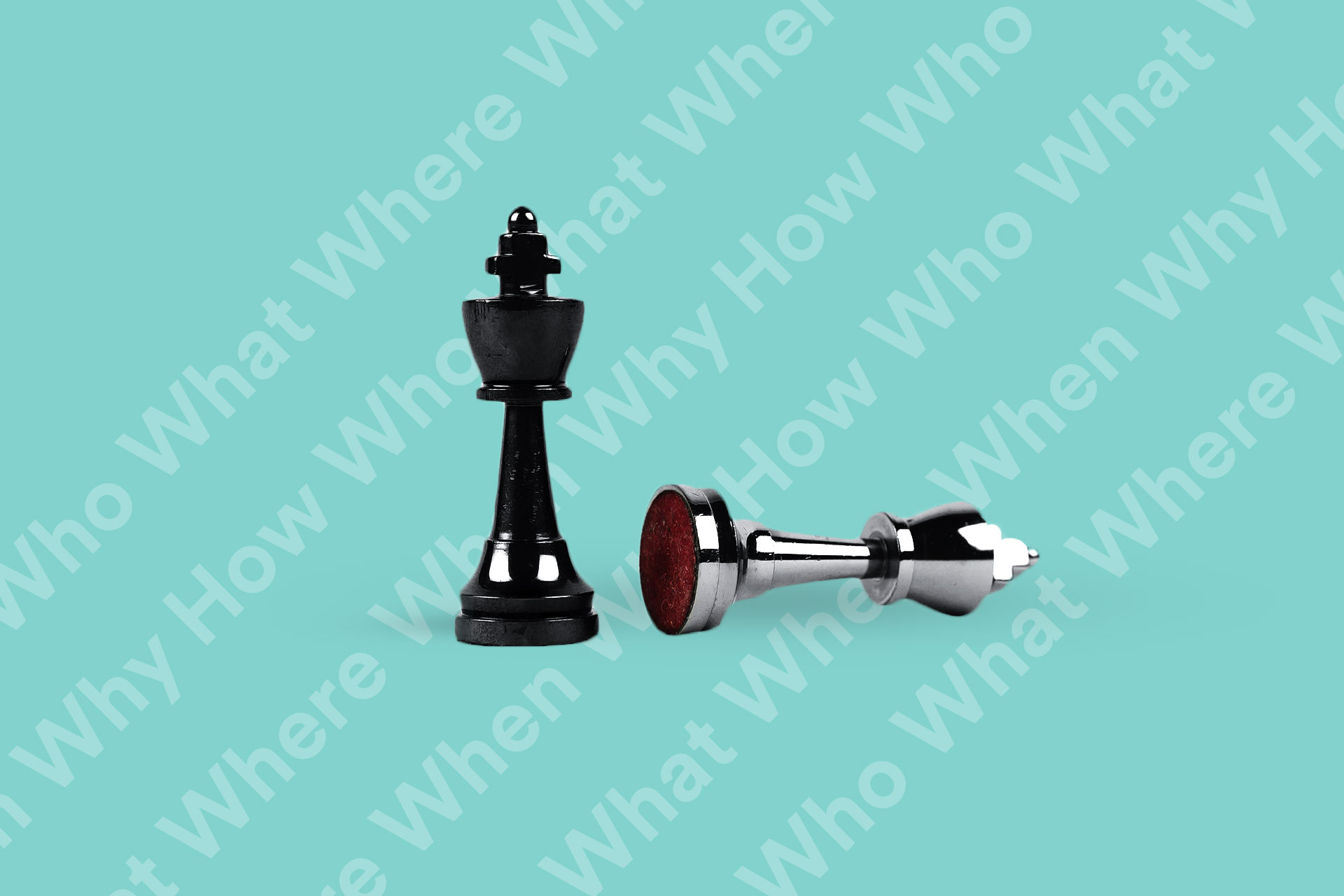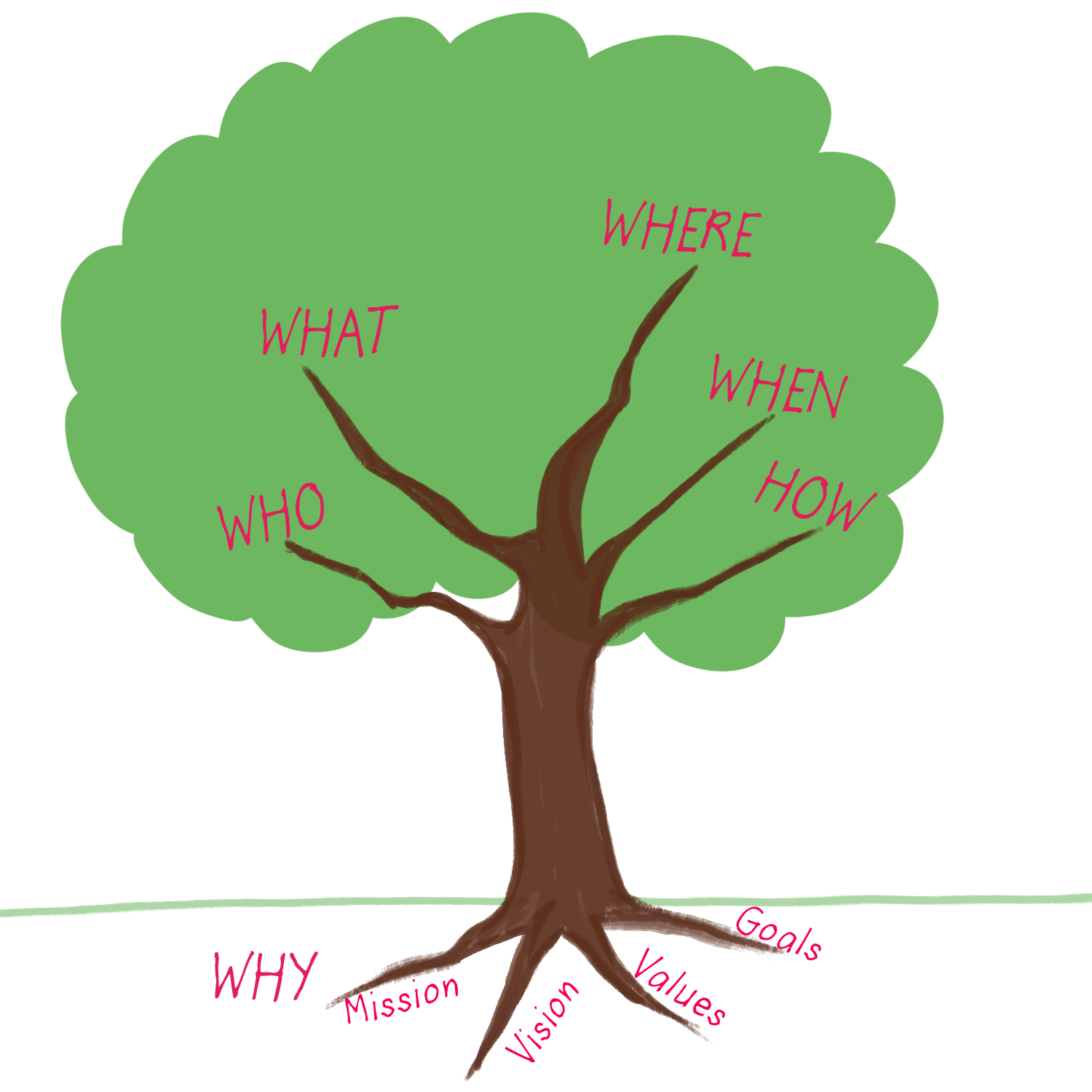The Most Important Elements of a Content Strategy
Use this popular framework to simplify the creation of your content strategy.

Search online for the elements of a content strategy, and you’ll be overwhelmed by the results.
Some say there are five elements for a good content strategy. Others say seven. While Forbes says there are as many as 14!
You can spend precious time trying to reconcile what everyone says. Or, you can keep reading and see a streamlined approach to formulating a content strategy.
So if you’re overwhelmed with the idea of putting together a content strategy, don’t worry. I’ve got you covered!
Content Strategy Defined
First, let’s get on the same page about what a content strategy is.
A content strategy is the big-picture, long-term plan for producing content to achieve your business goals.
When I say “producing content,” I mean the entire process of getting content to your audience. It covers:

- Ideation. Coming up with ideas for content
- Creation. The actual production of content, whether it’s writing or recording
- Distribution. Making the content available to your audience
- Promotion. Attracting audiences to your content, or getting it in front of your intended audience
- Evaluation. Measuring the effectiveness and impact of your content
- Iteration. Repeating the entire process while making adjustments based on results
When most people think of content strategy, they only consider the creation of content—the writing of the post, or the recording and editing of the video. But as the graphic above shows, content creation is only one piece of the entire process.
A good content strategy covers all the other phases of content production, from ideation to iteration.
With this definition, we can now go into the most important elements of a content strategy.
To Create Your Content Strategy, Think Like a Journalist
Journalists have a tool for making sure they cover any topic comprehensively. That tool is called 5Ws and 1H. It stands for:
- Who
- What
- Where
- When
- Why
- How
To simplify the act of formulating your content strategy, you can also use the 5Ws and 1H. Your answers to each one become the elements of your content strategy, beginning with …
Why
“Why are you doing content marketing?”
That’s the first question to ask. Your answer lays the foundation of your content strategy because your “why” inspires and forms the basis for every other decision you make around your content.
“People don’t buy what you do; they buy why you do it. And what you do simply proves what you believe,” Simon Sinek wrote in his book, Start with Why: How Great Leaders Inspire Everyone to Take Action.
Your answer to this questions has two elements:
Mission, Vision, and Values
The mission, vision, and values of your business informs every other aspect of your enterprise. That includes your content strategy as well.
Review your business’ reason for being. In broad terms, express how the content you produce will help you bring your mission, vision, and values to life.
Goals
Goals are concrete results you want to achieve as a result of pursuing your mission, vision, and values. They form part of the foundation for your content strategy, because your content strategy needs to contribute to the accomplishment of these goals.
You can visualize your content strategy as a tree. Your “why” is a system of roots, from which all the other branches (who, what where, when, and how) emanate.

With the foundation in place, you can turn your attention to the other elements of your content strategy.
Who
“Who is your audience?”
Unless you’re Coke, you’re not addressing everyone. Decide on a specific audience (or a few) you want to provide content for. You may find it helpful to create personas or avatars for your audiences. Carry out the necessary market research to make sure you truly understand them. Know their pain points and dreams. And then get clear on how your content will help them either solve their problems or experience the delight they’re seeking.
What
“What will your content convey?”
This includes your core messages, brand voice, unique selling proposition (USP), and value proposition. It also covers the themes and topics of your content.
Where
“Where will you publish content?”
This refers to the channels or platforms you wish to use to publish your content. You have numerous options, such as your blog, YouTube channel, podcast, Instagram, TikTok, and other social media, and so on.
You probably won’t be able to be on all the channels, and that’s all right. Your final channel mix will depend on where your audience is hanging out online, your personal preferences, and the time and skills available to you.
When
“When will you deliver your content?”
This question has two sides. The first is, when in your audience’s customer journey will you produce content for? Your audience needs different content depending on where they are on this journey. You may choose to offer content for every point in that journey or to focus content only on specific ones.
The second side to this question is, when will you publish content? What days/times, and how often? This refers more to the cadence or timing of your content development. For example, you may decide to publish a blog post three times a week, a newsletter once a week, and a podcast episode once a month.
An editorial calendar is a handy way of capturing the topics, formats, channels, and timing of your content.
How
“How will you produce content?”
This question covers all six phases of content production: (1) ideation; (2) creation; (3) distribution; (4) promotion; (5) evaluation; and (6) iteration.
Think about the specific workflow or process you wish to follow to move through all the stages. You can break down the process this way: Who will do what, by when, and following which steps?
Answering these questions forces you to consider what resources you have available for content marketing. You won’t be able to do everything you wish you could do for your audience. And that’s actually one of the benefits of developing a content strategy.
As Michael Porter puts it, “The essence of strategy is choosing what not to do.”
Your decisions about what you’re not going to do in your content marketing as just as important as what you are going to do.
Content Strategy, Simplified
And there you have it, the 5Ws and 1H of a content strategy.
When you’ve answered the six questions above, you would’ve covered all the important elements of a content strategy.
I hope this has simplified the process of putting together a content strategy for you. If you ever feel overwhelmed, pause and focus on just one question at a time.
And finally, remember that your content strategy isn’t set in stone. You can iterate, improve, and adjust as you see fit. Progress is better than perfection.
Lexi Rodrigo is the former Content Manager at Acadium. As a marketing and communications professional and course creator, she helps remarkable brands get seen, heard, and known. She has been a digital marketer and copywriter since 2008. She's also the co-author of "Blog Post Ideas: 21 Proven Ways to Create Compelling Content and Kiss Writer's Block Goodbye." When she's not reading or writing, Lexi bakes bread, grows food, and takes long walks. Connect with Lexi on LinkedIn.
-
Business Growth
Build a Real Marketing Plan Using AI This Afternoon (Not This Quarter)
-
Business Growth, Career Prep
What is an SEO landing page & How to Build One? [Step-by-Step Guide]
Learn the ins and outs of SEO landing pages and how to build one with our step-by-step guide. Discover the key elements and best practices for creating a high-performing landing page that drives conversions and improves your search engine rankings.

Subscribe to our newsletter for digital marketing resources
Become a better marketer with our digital marketing resources and tips shared weekly in your inbox.

Get started with Acadium
Build your marketing career for free or find marketing talent on any budget — fully remote.

